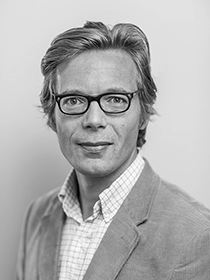Interested in the methodology of science? Sign up for our MOOC!
What is good science? How is scientific research carried out in the best way? And what is the best way to communicate your findings?
KTH has just launched the new MOOC course Philosophy of Science for Engineers and Scientists where participants will develop the skills to identify, criticize and justify scientific methods.

Professor Till Grüne-Yanoff, coordinator and teacher for the course, hopes that the KTH-unique experience of teaching methodology to scientists will now reach a wider audience. In just a few days, over 310 participants have already enrolled.
Who is this MOOC for? What are you hoping the participants will gain from it?
This course is for anyone interested in how science and engineering science works. If you ask yourself: “Why did they investigate this question in this way?”, “How do they justify this claim?”, or more specifically “What method should I choose to investigate this issue?”, then this course is for you. Now ideally, I would hope that the course helps people answering these questions for their respective disciplines and fields of interest. But that might be asking too much: the course necessarily abstracts from many specific problems, and does not discuss all scientific methods. But I hope it will help some people to make more justified method choices. And at the very least, those who take the course will be more sensitive to the fact that scientists always have to face a method choice, and must justify why they choose some method over others for achieving their scientific goals - be this regarding different modelling strategies, experimental methods, or statistical tools.
What surprised you most in the production of the MOOC material? What did you learn from it?
I learned a lot making this MOOC. Preparing the videos, developing the graphs and fitting them with learning activities gave me ample opportunity to reflect on the content and style of the presentations - much more so than preparing regular lectures that one maybe gives only one time. "Is this really what you want scientists and engineers to take home from a philosophy course?" "Will it be relevant for them?" These questions often made me go back and change things, sometimes quite late in the game (to the despair of all involved). What most surprised me was how much work making a MOOC is - much more than I had expected in the beginning. And I would have never been able to complete it without a wonderful team, including KTH’s digital learning group, the teaching assistants from the philosophy unit and in particular the wonderful media designer Jonas Thorén. A big thank you! to them all.
Have you been able to use the material and experience gained from the MOOC production in your campus based teaching?
Yes, I am using all the videos in the Theory and Methodology of Science with Applications campus courses, which are taken by many students (about 1200 last year). But not through edX. Instead we use the videos, with different learning activities, on CANVAS (KTH:s learning management system). The students like it a lot: they can watch the videos anywhere, they can repeat or jump at their own pace, and they have ample opportunities to check whether they understood the material. With the material now being online, I organise a number of flipped classrooms on campus. There we discuss student-submitted questions and longer application exercises - a lot of peer instruction combined with teacher input. Quite a lot of fun to see a well-filled F1 erupt into discussion!
Contact:

